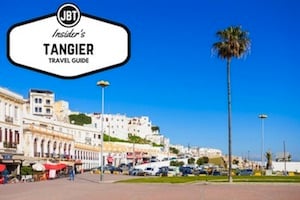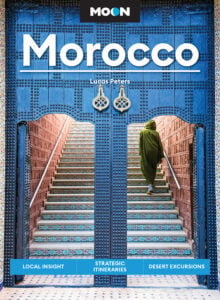 Among Morocco’s most iconic destinations, traveling to the Sahara Desert of Morocco is among Morocco’s iconic things to do. Most travelers who visit the Sahara opt for an experience among the Erg Chebbi dunes in eastern Morocco. Near Erfoud and Merzouga, travelers tend to start this excursion from Marrakech or Fes.
Among Morocco’s most iconic destinations, traveling to the Sahara Desert of Morocco is among Morocco’s iconic things to do. Most travelers who visit the Sahara opt for an experience among the Erg Chebbi dunes in eastern Morocco. Near Erfoud and Merzouga, travelers tend to start this excursion from Marrakech or Fes.
If you’re an adventurous traveler who wishes to see less traveled parts of the Sahara, consider wandering further south to the Erg Chigaga dunes, south of Zagora and Tagounite. In both areas, you can create a classic desert experience by hiking the dunes, riding a camel, eating local food, sand boarding, camping and star gazing.
If you continue to wander southward through the desert, you’ll cross over the dotted line placed on most maps of Morocco and enter the disputed territory of Western Sahara. This vast and flat area of the desert is claimed by both Morocco and the Algerian-backed Polisario front, though it’s Morocco that governs most of the territory.
Just below the dotted line is the coastal city of Laayoune. Though relatively small compared to metropolises like Marrakech and Fes, Laayoune is the economic hub of the Western Sahara and offers plenty of shopping, restaurants and cafes, especially in Suuq Djemal. Those interested in visiting the beach can venture a few miles south of town by bus or taxi to Foum el Oued, popular for surfing and oceanside relaxation.
Following the coast south brings you to Dakhla, a fishing town and surfing site on a small peninsula. Founded by Spanish settlers in 1502, some of the town’s most fascinating attractions are relics of its Spanish influence. The Spanish lighthouse just outside of town is among these. Visitors can admire its historic architecture from the ground, and those with stamina can opt to climb its 240 stairs to reap the rewards of panoramic views over desert coast. Other Spanish attractions include a military fortress and a Catholic cathedral.
Speaking of lighthouses, travelers can admire a Portuguese lighthouse in Boujdour, another coastal town. Instead of beaches, the oceanside scenery here consists of picturesque cliffs. And for those more fluent in Spanish than Arabic, most of the locals here also speak Spanish!
Travelers who journey via one of the few inland roads may encounter Smara, the only major city in Western Sahara not founded by Spanish settlers. Historically, the town became significant because of its role as a nomadic trade hub and its vast Islamic library. Today, its main attraction is an ancient fortress in the city center that surrounded a mosque. Inland travelers might also pass through Bou Craa, which is a mining town that doesn’t typically attract tourists but is an off-the-beaten path destination (as our others in our Morocco blog).
Continue traveling south and you eventually cross over into Mauritania. Be aware that you must make arrangements to cross the border in a vehicle—no foot traffic allowed.
Written by Shelley A. Gable, instructional designer and freelance writer.
Photo by X Ceccaldi.








